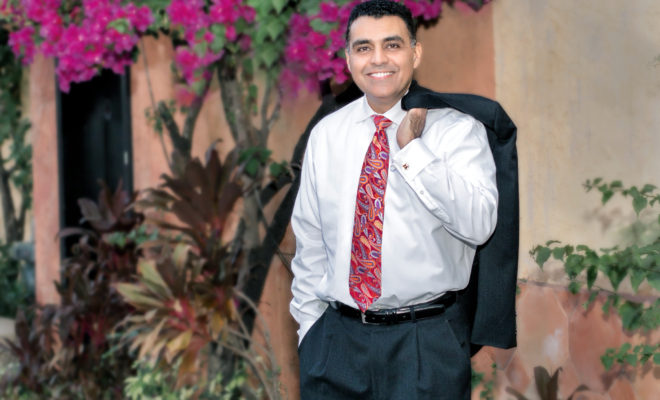
Health & Wellness
InHealth: The Deep Plane Facelift
By Sumeet Bhanot, M.D., F.A.C.S.
April 2021
The buzz over deep plane facelifts is growing louder due to a Real Housewife of NYC recently having one: What makes it special?
To understand this, we must first understand the architecture of the face. Anatomically, the face consists of a bony skeleton that provides structure to soft tissues made up of deep fat, fascia, and superficial skin penetrated by supporting cutaneous ligaments.
Aging is the disharmonious descent of the soft tissue elements relative to their ligamentous anchors. For example, the deep fat, which provides volume in the face, descends and settles in the lower cheek and jowl area. This shift hollows out the upper cheek and lower eyelid area and changes the shape of the face, leading to a heavy lower face and a gaunt upper face.
Because aging is a multidimensional problem involving volume shift, loose fascia, and sagging skin, a simple solution is unlikely to correct it. The most common fixes offered today are the nonsurgical facelift, the mini-lift, the traditional facelift, and the comprehensive deep plane facelift.
Typically, nonsurgical solutions fill the upper facial voids with volume. If this is done judiciously or on the young who have limited facial descent, the illusion helps. Unfortunately, this approach retains the lower heaviness while adding upper heaviness to match, and can result in a cherub-like, distorted appearance. The mini-lift, another unidimensional approach, fails miserably because it just stretches the skin and leaves the bulk of aging untouched, creating a wind-swept appearance. The traditional facelift addresses the neck and jowl, however fails to reposition the mid facial volume. Some doctors remedy this with fat injection to hide the volume descent. I used to perform this facelift myself, but I was frustrated with the limitations of the results.
My philosophy now is to tackle the problem at the source with a very rare comprehensive deep plane facelift. In this approach, we release the anchors and reposition facial volume globally in a vertical lift. When the fascia is repositioned in the traditional facelift it is limited by the anchors. The deep plane not only improves the fascial repositioning by releasing the anchors, it adds the dimension of volume repositioning by moving the fat pads. This addresses the root cause by repositioning all elements of soft tissue that descended with age. To the best of our ability, this restores the natural harmonious proportions of the youthful face, without the limitation of the other techniques.
In essence, patients actually look decades younger and yet natural, with soft fullness in the upper face and less heaviness in the lower face. This is simply because we are moving more of the facial structures and volume back to their original locations and not compensating by overfilling or overly stretching the skin. I invite you to look at the results yourself and you will notice that they require no explanation or qualifications; they just look right.
Many of my patients report that their family and friends did not realize they had a facelift, only that they look fabulous! The state of the art is not how easily, quickly, or cheaply a problem can be fixed. Rather it is a methodical, measured, artistically crafted, comprehensive technique that creates natural youthful beauty. The deep plane facelift is performed in the operating room with an anesthesiologist and light anesthesia just like the other facelifts with similar recovery, yet the results are dramatically different. We only live once. Choose wisely and enjoy life!
Bhanot Facial Plastic Surgery
2038 Bee Ridge Rd., Sarasota, FL 34239
941.966.3223 • www.sarasotafacialplastics.com



You must be logged in to post a comment Login